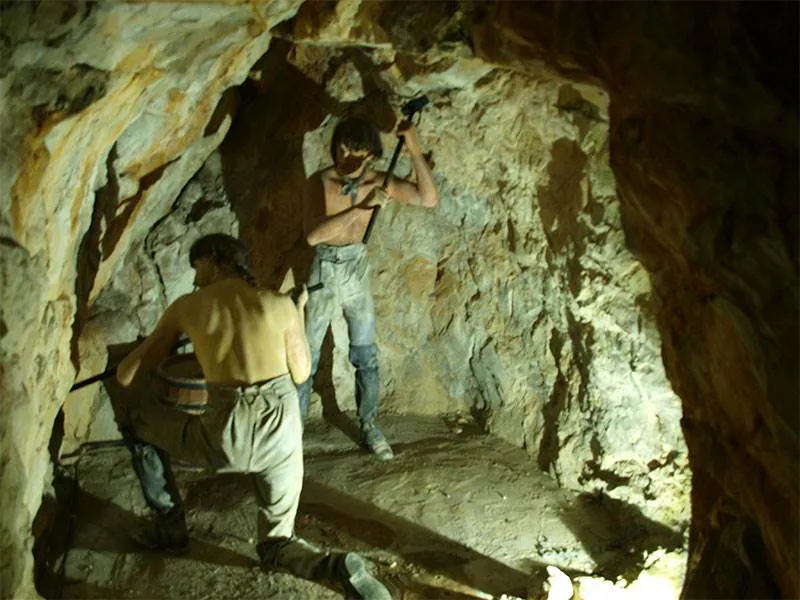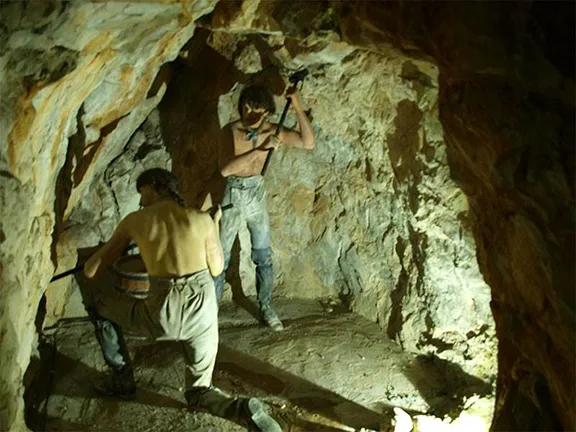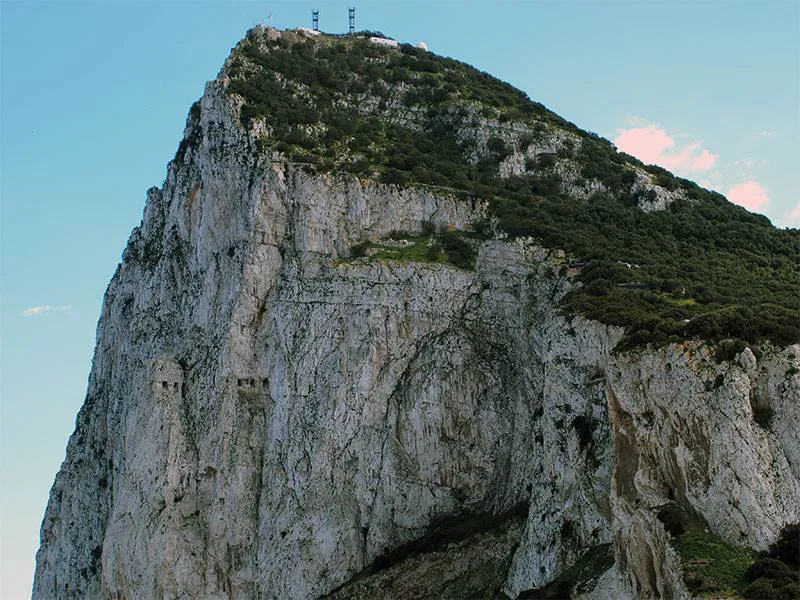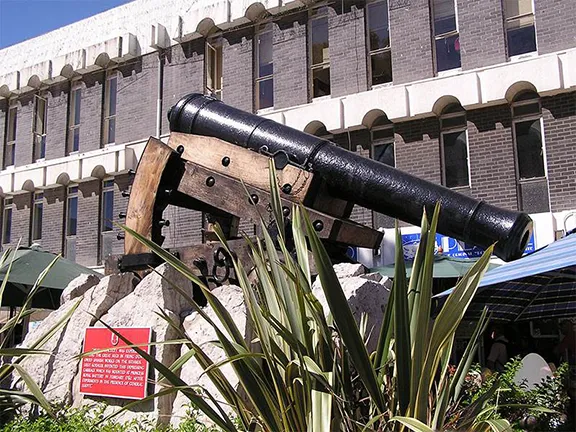Guide to the Great Siege Tunnels, built following the Spanish siege of Gibraltar in 1779
By Nick Nutter | Updated 9 Apr 2024 | Gibraltar | Places To Go |
Login to add to YOUR Favourites or Read Later


Guarding the tunnels
The Great Siege Tunnels of Gibraltar stand as a testament to human ingenuity, resilience, and the strategic importance of this tiny British Overseas Territory. Carved out of the solid limestone of the Rock of Gibraltar during the Great Siege of 1779-1783, these tunnels were initially engineered as an ingenious solution to a dire military necessity.


Digging by hand
At the end of the Great Siege, in 1783, the defeated Commander of the French and Spanish troops, the Duc de Crillon, on being shown the fortifications, primarily the Siege Tunnels, that had led to the defeat of his troops, commented “These works are worthy of the Romans”.
High praise indeed from a vanquished foe.


Embrasures
In June 1779, Spanish forces laid siege to Gibraltar during the American War of Independence. An army faced Gibraltar across the narrow isthmus connecting the Rock to the mainland, and the Spanish fleet patrolled the waters of the Strait and Algeciras Bay.
The Spanish spent two years building up their forces and constructing the ‘Lines’, a series of fortified trenches and gun emplacements across the isthmus, in preparation for an assault on the British. A planned assault for November 1781 was foiled by the British in a now famous action, ‘the sortie’ when the garrison forces sallied out through Landport Gate and destroyed many of the forward batteries.


The North Face
Despite constant bombardment from the Spanish positions, the defenders held on. Supplies periodically arrived by sea, small boats from Minorca, Lisbon and Morocco avoided the Spanish blockade to bring supplies to the garrison, and the occasional fleet from Britain slipped past the patrolling Spanish ships. Most of the civilian population departed for England in the returning ships.
Following the defeat of Cornwallis at Yorktown in October 1781, the French, allied to the United States, had effectively thrown the British out of North America. This left the French free to concentrate on the war in Europe. The French considered their Spanish allies’ efforts to take Gibraltar a travesty.


Kohler's depressing gun
In early 1782, the Duc de Crillon took over command of the siege and French units began to augment and reinforce those of the Spanish. By September of that year, the attacking forces consisted of at least 33,000 soldiers, 30,000 sailors and marines, 114 land guns and mortars, 47 ships of the line, 10 floating batteries and 40 gunboats.
General Eliott, in command of the British and Hanoverian defenders, had 7,000 soldiers, 500 gunners, 96 guns and 12 gunboats at his disposal. Any idea that would give an advantage to the defenders was welcomed, and during the period of the siege, there were a number of innovative ideas put forward by the rank and file. Some were implemented, and the inventor rewarded.
One of the more radical ideas was the brainchild of a Sergeant Major Henry Ince.
In May of 1782, General Eliott had offered a reward to anybody who could come up with a plan to get a cannon up to a particular high point on the Rock called 'The Notch'. Eliott wanted to give his gunners the chance to fire down into the enemy’s lines at maximum range.
Sergeant Major Henry Ince of the Company of Military Artificers (later Royal Engineers) had the idea of mining a tunnel through the rock rather than trying to haul guns up the outside. They used crowbars, sledgehammers and gunpowder to drive a 2.4 square metre tunnel 25 metres into the limestone of Gibraltar in the first five weeks.
Small holes were blasted through the sides of the tunnel to ventilate the fumes from the gunpowder. It quickly became evident that these ventilation holes made excellent gun positions as they overlooked the enemy positions and offered good protection to the gunners.
This first gallery was called Windsor Gallery, and by the time the siege ended, it was 113 metres long and had four guns in embrasures along its length. Two more tunnels were excavated before 1783 lower down the north face of the Rock called 'Kings and Queens Lines'.
The Artificers did not manage to reach 'The Notch' during the siege itself. Instead of installing a gun position above it they excavated a broad firing base within the rock and called it St. George's Hall.
Sergeant Major Ince received his reward, a horse from the Duke of Kent, Gibraltar's Royal Governor and father of Queen Victoria, and a parcel of land on the Rock. It is still called Ince's Farm. Tunnelling continued after the siege up to the end of the Second World War.
By the end of the 18th century, a series of galleries and interconnecting tunnels almost 1,200 metres in length had been created in The Rock.
Gunners high on the Rock had the advantage of height and therefore range, but they could not depress the guns far enough to shoot at attackers close into the rock.
In 1782, Lieutenant George Frederick Koehler designed a gun carriage to solve this particular problem. The depressing gun carriage allowed this practically and innovatively. The gun itself was fixed to a sliding carriage which allowed the barrel to recoil upwards whilst the carriage itself remained fixed.
Koehler’s second innovation was to attach the sliding bed to the carriage with a vertical spindle. This configuration allowed the sliding bed to rotate to the side which allowed the gunners to reload without being exposed to enemy fire.
One of Koehler’s guns has been restored and is now mounted in Casemate’s Square.
The gun was tested in 1782. The chosen target was the San Carlos Battery, a Spanish gun position in their lines at a range of about 1,300 metres. 28 out of 30 shots hit the target which was pretty impressive at the back end of the 19th century.
A tour of the Great Siege Tunnels starts just above the Moorish castle where the entrance is now guarded by a cannon dating back to Victorian times.
Today, the Great Siege Tunnels are one of Gibraltar’s most fascinating and visited historical attractions, offering visitors a glimpse into the past and the remarkable story of survival and tactical brilliance.
Following the end of their military use, the tunnels’ historical significance and unique construction drew the interest of historians, engineers, and tourists alike. Recognising the potential for education and exploration, the Gibraltar government began to promote the site as a key tourist attraction. Efforts were made to ensure safe access to the public, with lighting, information plaques, and guided tours being introduced to enhance the visitor experience.
What draws visitors to the Great Siege Tunnels is not only the engineering marvel they represent but also the stories of perseverance and innovation they contain. Each corridor, chamber, and viewpoint within the tunnel system tells a part of the story of Gibraltar’s past, from the days of the Great Siege to its role in later conflicts and its eventual transition to a peaceful territory.
A visit to the Great Siege Tunnels offers a deep dive into the military history and engineering feats that define this strategic location. Here’s what you need to know to plan your visit and ensure an insightful exploration of one of Gibraltar’s most iconic attractions.
The Great Siege Tunnels are located within the Upper Rock Nature Reserve. You can reach the entrance by taking the Gibraltar Cable Car to the Top of the Rock, followed by a short walk.
Entry to the Great Siege Tunnels is included in the general admission ticket to the Upper Rock Nature Reserve. This ticket also grants access to other attractions within the reserve, such as St. Michael's Cave and the Apes’ Den.
Do note that the Upper Rock Nature Reserve ticket does not include the cable car to the Top of the Rock. Instead, opt for the 1-day Gibraltar Pass which includes the cable car (and a few other useful things for your visit!). The pass is digital. You can access it via your mobile phone and scan it at all the included attractions, making it convenient and hassle-free.
You can get the Gibraltar Pass in advance here:
The Tunnels can be visited year-round, but mornings or late afternoons are recommended to avoid the midday heat and peak tourist times. Gibraltar enjoys a mild climate, but the Tunnels can be cooler than the outside temperature, so bringing a light jacket is advisable.
Allow at least an hour to explore the Tunnels thoroughly.
If you're based in Costa del Sol, an easy way to visit Gibraltar is on a Malaga to Gibraltar Day Tour.
Read our articles for more on visiting Gibraltar:
For opening times of the Great Siege Tunnels, click here